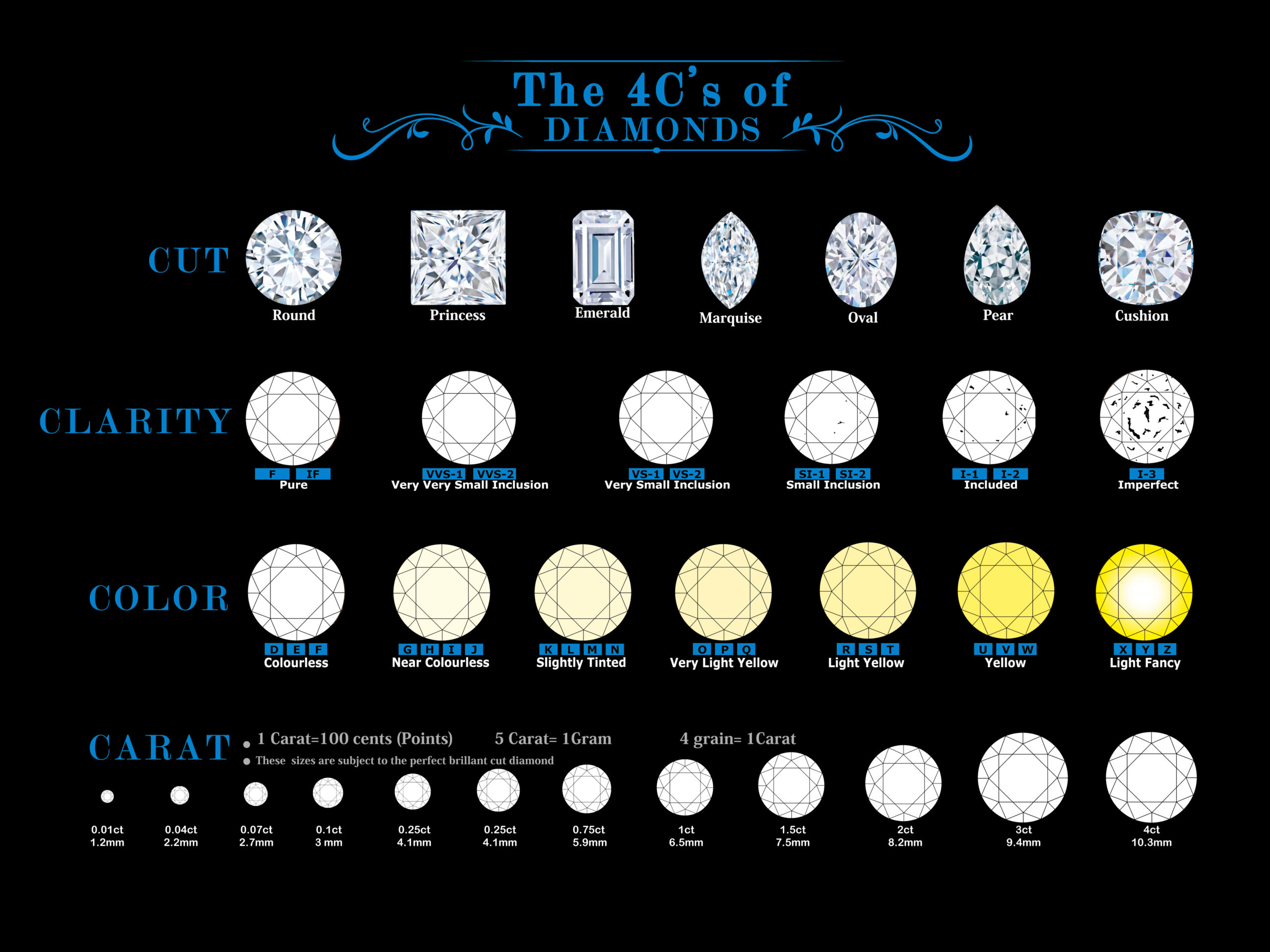Diamond Pricing
- Home
- >
- Diamond pricing
Luxury Commodity
about
Pricing
diamonds price
Except when used for industrial purposes, diamonds remain largely a luxury commodity.
Diamonds have a set international market price, unlike other gems. In this respect, diamond is somewhat like gold.
However, diamond pricing is much more complicated than gold. While every ounce of gold is the same, diamonds must be graded to determine their value.
Even though the 4 Cs is the basic standard for grading, a myriad other factors influence diamond value.
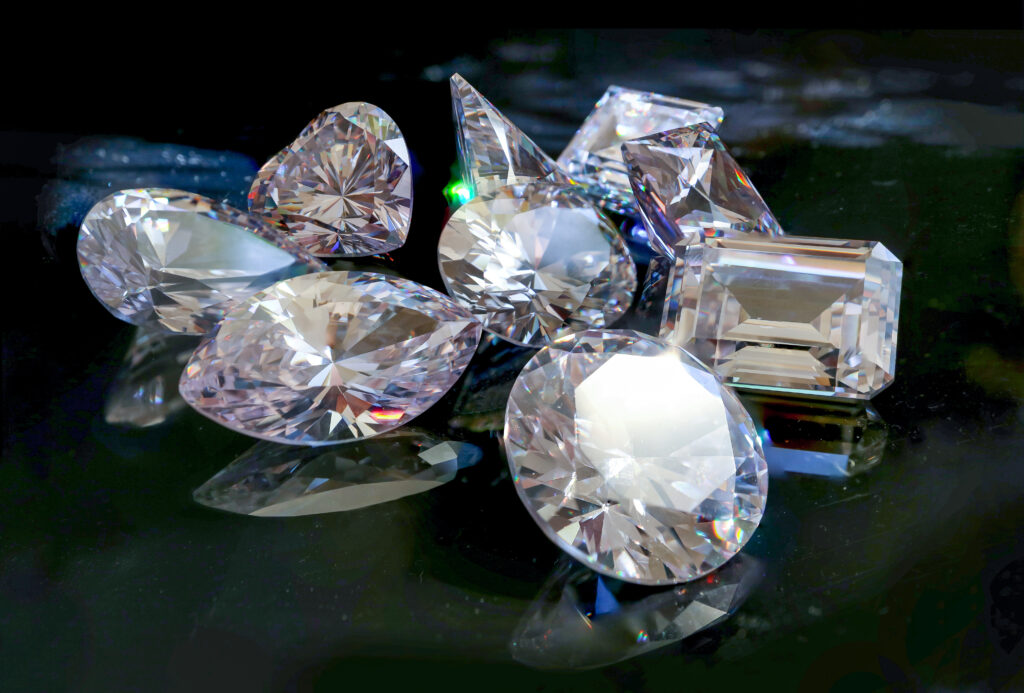
Diamond Shape
Some branded cuts, such as “Hearts and Arrows,” will cost more because they boast greater cutting precision, which results in a greater loss of rough. “Hearts and Arrows” diamonds will have greater symmetry than most other diamonds. However, that doesn’t always mean they have better overall cut grades.
Diamond Hue
Colorless diamonds on the normal color scale are usually yellowish, brownish, or grayish in hue. Diamond hue is only listed on grading reports if the color grade is below K, but the hue of the diamond starts to show at a color grade of G. Brownish and grayish diamonds tend to be more affordable than ones with yellowish tints, although they’re becoming increasingly popular in edgy modern and sometimes even vintage designs.
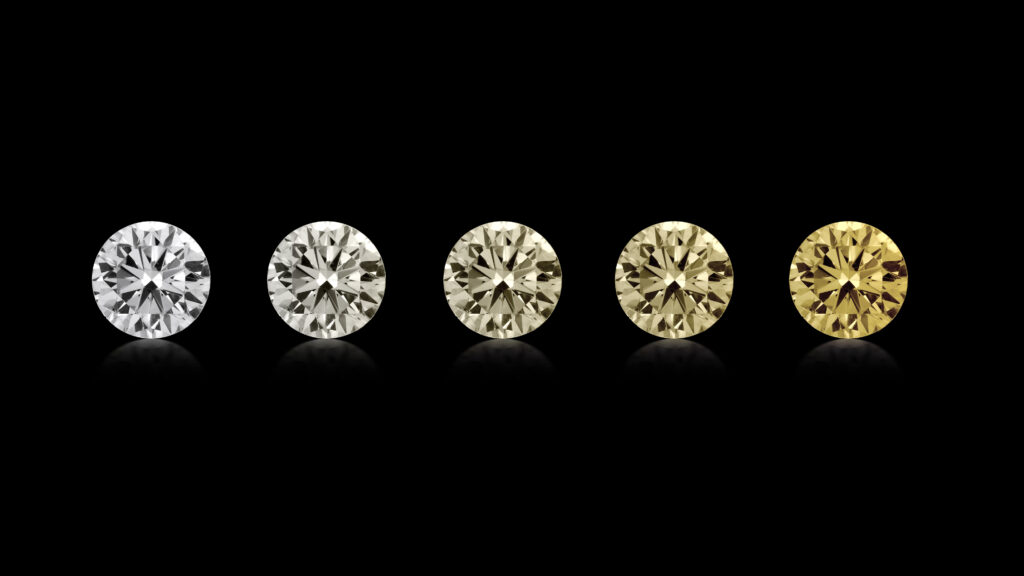
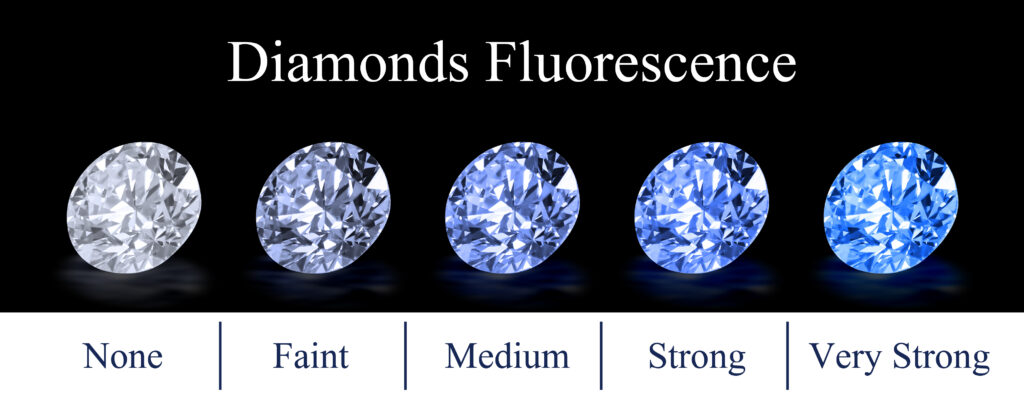
Diamond Fluorescence
Fluorescence will decrease the value of D-F color grade diamonds but may increase the value of G-J diamonds, depending on the color of fluorescence. Medium to strong fluorescence can cause a stone to look milky, thus decreasing its value. However, blue fluorescence can counteract any yellowish hue that a lower grade diamond may have. Therefore, it may actually improve the color of diamonds with grades G or lower. This slight increase in value only holds true for blue fluorescence.
On the other hand, yellow or green fluorescence will always lower diamond prices, unless the diamonds are fancy yellow or green. In such cases, these fluorescent colors will make the diamond colors appear more saturated, thus increasing their value.
Weak fluorescence doesn’t have much of an impact on a diamond’s value. It may lower the price slightly for D-F color diamonds, even if it doesn’t affect the appearance of these stones. In this case, the slightly fluorescent diamond might make a good deal.
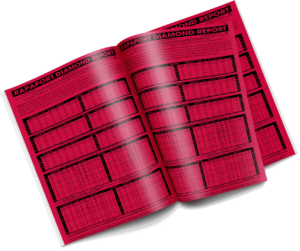
Rapaport Group
Before diamonds could have a stable and predictable market price, a basic agreement on their worth had to exist. In 1976, Martin Rapaport established a diamond “rap list” that gave price benchmarks for colorless round, pear, and marquise-cut diamonds. Based on the high cash asking price in New York, these benchmarks are published in Rapaport magazine monthly and updated weekly online on RapNet. These guidelines are available only to those directly involved in the industry. Retailers around the world use these reports.
Rapaport Price List
The Rapaport price list is the primary source of diamond price information for the diamond trade and is commonly used by dealers as an approximate guideline for evaluating diamond prices. It is published online every midnight Thursday.
The Price Lists quote the Rapaport opinion of high cash asking prices for Rapaport Specification A3 and better diamonds. These prices may be substantially higher than actual transaction prices. It is most common for the diamond trade to transact diamonds at a discount to the List. However, in some instances, select qualities that are in short supply or subject to speculative demand may trade at significant premiums to the List. Premiums, when applicable, are most common for large, very fine cut diamonds.
The level of discount or premium varies greatly and is influenced by many factors. Stone quality and cut, credit/memo terms, the location and type of market and the liquidity level of particular size/quality combinations all impact the discount level. Liquidity and the associated risk of ownership are also a factor. The easier it is to sell a diamond, the lower its discounts to the List. Hard-to-sell diamonds often trade at large discounts. Very in-demand, scarce diamonds may trade at premiums to the List.
The Rapaport Price List does not provide transaction prices but rather price indications that may serve as a starting point for negotiations and a basis for estimating value for a broad range of diamond sizes and qualities.
The Effect of Rap Prices
The Rapaport price list is the primary source of diamond price information for the diamond trade and is commonly used by dealers as an approximate guideline for evaluating diamond prices. It is published online every midnight Thursday.
The Price Lists quote the Rapaport opinion of high cash asking prices for Rapaport Specification A3 and better diamonds. These prices may be substantially higher than actual transaction prices. It is most common for the diamond trade to transact diamonds at a discount to the List. However, in some instances, select qualities that are in short supply or subject to speculative demand may trade at significant premiums to the List. Premiums, when applicable, are most common for large, very fine cut diamonds.
The level of discount or premium varies greatly and is influenced by many factors. Stone quality and cut, credit/memo terms, the location and type of market and the liquidity level of particular size/quality combinations all impact the discount level. Liquidity and the associated risk of ownership are also a factor. The easier it is to sell a diamond, the lower its discounts to the List. Hard-to-sell diamonds often trade at large discounts. Very in-demand, scarce diamonds may trade at premiums to the List.
The Rapaport Price List does not provide transaction prices but rather price indications that may serve as a starting point for negotiations and a basis for estimating value for a broad range of diamond sizes and qualities.
The Limitations of Rap Prices
Rapaport also doesn’t take into account all possible value factors. For example, the Rapaport price guide focuses on Color, Clarity, and Carat, based on Gemological Institute of America (GIA) standards, but doesn’t adjust for Cut. It assumes that all the diamonds listed are fine cut. Of course, this isn’t a huge oversight, because consumers should ideally only purchase stones that have “Excellent” cut grades. Stones with lower cut grades just don’t make good deals and don’t look visually appealing. Polish and symmetry, also not included in Rapaport, should also be “Excellent” or “Very good” for a stone to be a good purchase.
No Great Deal in the Diamond World
Keep in mind that, in general, there are good deals but no great deals in the diamond world. If a diamond is priced extremely low, odds are it has a drawback in one of the 4Cs. Of course, there’s nothing wrong with purchasing a stone with lower color or clarity grades or with characteristics like fluorescence.
The key thing is to be familiar with what goes into determining the diamond’s price. You can then make an informed decision.
